Evidence for a conserved inhibitory binding mode between the membrane fusion assembly factors Munc18 and syntaxin in animals
- PMID: 29046354
- PMCID: PMC5733584
- DOI: 10.1074/jbc.M117.811182
Evidence for a conserved inhibitory binding mode between the membrane fusion assembly factors Munc18 and syntaxin in animals
Abstract
The membrane fusion necessary for vesicle trafficking is driven by the assembly of heterologous SNARE proteins orchestrated by the binding of Sec1/Munc18 (SM) proteins to specific syntaxin SNARE proteins. However, the precise mode of interaction between SM proteins and SNAREs is debated, as contrasting binding modes have been found for different members of the SM protein family, including the three vertebrate Munc18 isoforms. While different binding modes could be necessary, given their roles in different secretory processes in different tissues, the structural similarity of the three isoforms makes this divergence perplexing. Although the neuronal isoform Munc18a is well-established to bind tightly to both the closed conformation and the N-peptide of syntaxin 1a, thereby inhibiting SNARE complex formation, Munc18b and -c, which have a more widespread distribution, are reported to mainly interact with the N-peptide of their partnering syntaxins and are thought to instead promote SNARE complex formation. We have reinvestigated the interaction between Munc18c and syntaxin 4 (Syx4). Using isothermal titration calorimetry, we found that Munc18c, like Munc18a, binds to both the closed conformation and the N-peptide of Syx4. Furthermore, using a novel kinetic approach, we found that Munc18c, like Munc18a, slows down SNARE complex formation through high-affinity binding to syntaxin. This strongly suggests that secretory Munc18s in general control the accessibility of the bound syntaxin, probably preparing it for SNARE complex assembly.
Keywords: Munc18; SM protein; SNARE proteins; glucose transporter type 4 (GLUT4); insulin; membrane transport; secretion; syntaxin.
© 2017 by The American Society for Biochemistry and Molecular Biology, Inc.
Conflict of interest statement
The authors declare that they have no conflicts of interest with the contents of this article
Figures

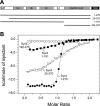

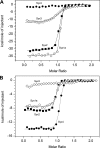
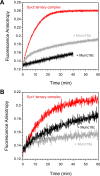
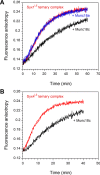
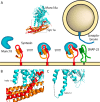
References
-
- Cai H., Reinisch K., and Ferro-Novick S. (2007) Coats, tethers, Rabs, and SNAREs work together to mediate the intracellular destination of a transport vesicle. Dev. Cell 12, 671–682 - PubMed
-
- Hong W., and Lev S. (2014) Tethering the assembly of SNARE complexes. Trends Cell Biol. 24, 35–43 - PubMed
-
- Rizo J., and Xu J. (2015) The synaptic vesicle release machinery. Annu. Rev. Biophys. 44, 339–367 - PubMed
Publication types
MeSH terms
Substances
Associated data
- Actions
- Actions
- Actions
- Actions
- Actions
LinkOut - more resources
Full Text Sources
Other Literature Sources

